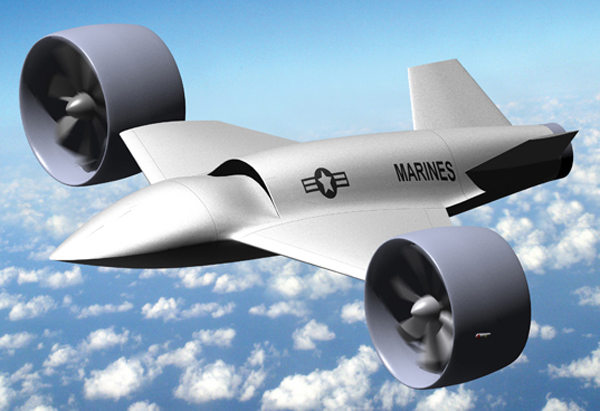The propulsion system for an unmanned aircraft that takes off vertically like a Transformer Robot then shifts to horizontal flight mid-air were tested yesterday at the University of Maryland’s Glenn L. Martin Wind Tunnel.
The AD-150 aircraft, developed by American Dynamics Flight Systems, is one of the few unmanned aircraft that can take off vertically and travel like an aeroplane at speeds of the Osprey (about 240 miles per hour). It can carry weaponry, an array of sensors or wounded soldiers with its 500-pound payload.
The AD-150 is being developed for emerging U.S. Navy and U.S. Marine Corps requirements for high-speed, vertical take-off and landing (VTOL) unmanned aircraft systems.
The wind tunnel’s large turbine will blow high-speed wind over the propulsion system while sensors measure the resulting forces and moments from which flight behaviour can be predicted. Smoke may be used to visualize airflow.
The test, made possible by a $135,000 grant from the Maryland Industrial Partnerships (MIPS) programme, will be the first in a series demonstrating the performance of the AD-150 during critical transition manoeuvres between hover and forward flight. Additional testing is planned over the next four months.
The test programme itself will also demonstrate a set of new test procedures that can greatly influence the development of future VTOL aircraft propulsion systems and pave the way to cost-effectively scaling ducted fan propulsion systems.
Wayne Morse, president of American Dynamic Flight Systems, Paul Vasilescu, technical development director for American Dynamic Flight Systems, and Jewel Barlow, director of the A. James Clark School of Engineering’s Glenn L. Martin Wind Tunnel, were present while ADFS scientists and university researchers conducted the airflow tests at the Glenn L. Martin Wind Tunnel, University of Maryland, College Park on Thursday, July 21st.
Source: Press Release

